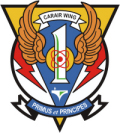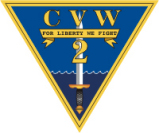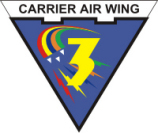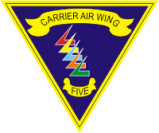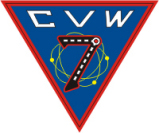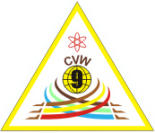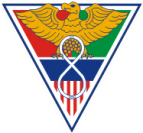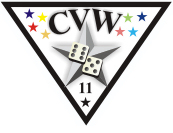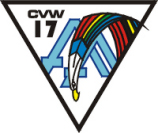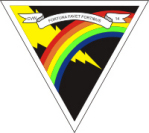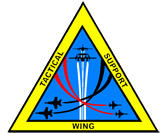
|
|
||||||||||||||
Originally
the air wing was called an air group and had a name, not a number;
the air group title was based upon the carrier it was assigned to.
For instance, an air group on CV-3 USS Saratoga would have simply
been called the "Saratoga Air Group". In 1942, air groups
lost the carrier name and began to be numbered.
A CVW is literally a self contained air force that can handle threats at sea, in the air and on the ground by night and day and in all sorts of weather. Multi-element strike packages can fight their way in, hit their targets with the latest in precision munitions, fight their way out and all the while have electronic support to suppress enemy defences whilst helicopters stand ready for SAR. Other embarked helicopters could also be conducting maritime security operations such as providing a means to stop and/or board a suspect vessel. Air wing tankers (F/A-18E/F) don’t have the high offload ability or range of the “big wing” tankers such as KC-135s so hang around the carrier to allow returning aircraft that have to go around or that have 'bolted' (missed a wire) the opportunity to take on board much needed fuel to get back home. Whilst most aircraft carry small air wing emblems somewhere about their fuselage or tails, it is the tailcodes that clearly identify the air wing with the first letter designating which coast the air wing hails from. An 'A' prefix, i.e. AC, signifies East Coast (air wing headquarters at NAS Oceana, VA) and an 'N' prefix, i.e. NG, signifies West Coast (air wing headquarters at NAS Lemoore, CA). All active fleet EA-6Bs and EA-18Gs, be they assigned to an east or west coast air wing, call NAS Whidbey Island, Washington their home. Some of the many Air Wing personnel work on the flightdeck to ensure smooth running of flight operations and have clearly defined roles to play. To determine, at a glance, what each person's role is, they wear colour coded uniforms which conform to fleet wide regulations. 
|
||||||||||||||||||||||||||||||
|

